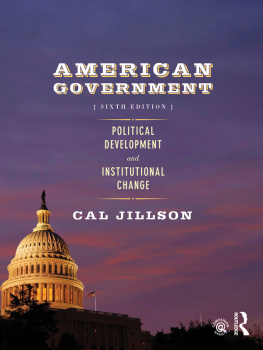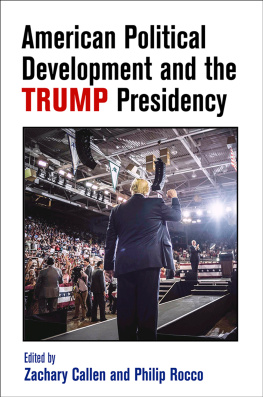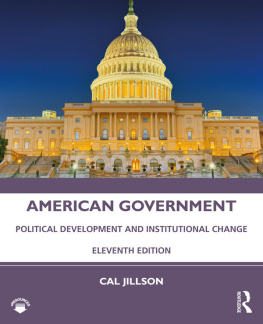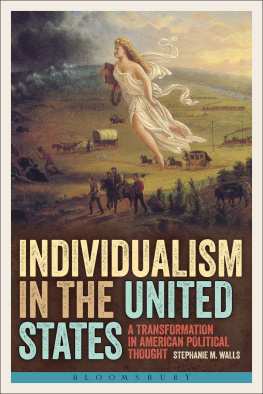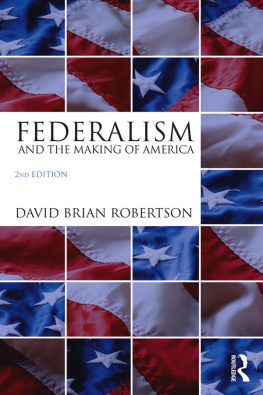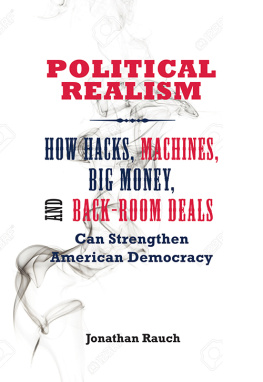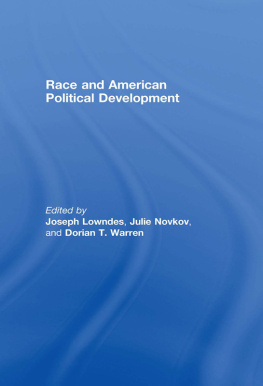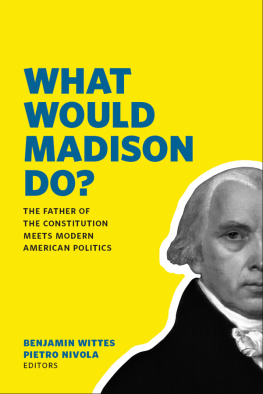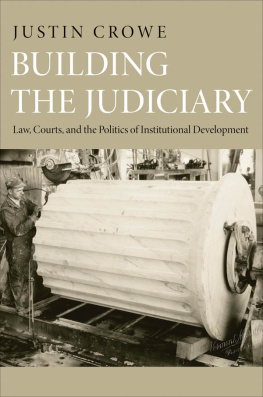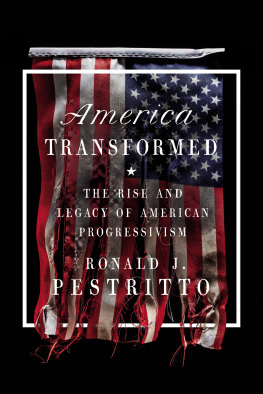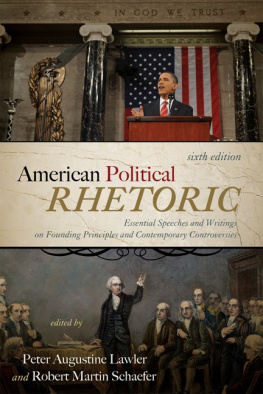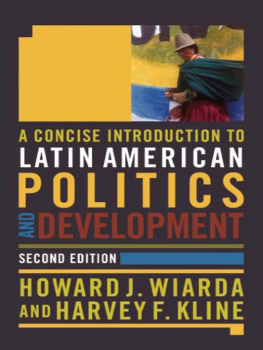AMERICAN
GOVERNMENT
AMERICAN
GOVERNMENT
Political Development and Institutional Change
CAL JILLSON
Southern Methodist University
Sixth Edition

Editor: Michael Kerns
Development Editor: Felisa Salvago-Keyes Editorial Assistant: Mary Altman
Senior Production Editor: Sin Findlay Copyeditor: Alison Elks
Proofreader: Jacqueline Dias
Indexer: Penelope Kent
Companion Website Designer: Marie Mansfield
First published 1999 by Harcourt Brace College Publishers
Second edition 2002 by Wadsworth/Thomson Learning, third edition 2005, fourth edition 2008 by Routledge, fifth edition 2009 by Routledge
This edition published 2011
by Routledge
270 Madison Avenue, New York, NY 10016
Simultaneously published in the UK by Routledge
2 Park Square, Milton Park, Abingdon, Oxon OX14 4RN
Routledge is an imprint of the Taylor & Francis Group, an informa business
The right of Cal Jillson to be identified as author of this work has been asserted by him in accordance with sections 77 and 78 of the Copyright, Designs and Patents Act 1988.
1999 Harcourt Brace & Company; 2002, 2005 Thomson Wadsworth; 2008, 2009, 2011 Taylor & Francis
All rights reserved. No part of this book may be reprinted or reproduced or utilized in any form or by any electronic, mechanical, or other means, now known or hereafter invented, including photocopying and recording, or in any information storage or retrieval system, without permission in writing from the publishers.
Trademark Notice: Product or corporate names may be trademarks or registered trademarks, and are used only for identification and explanation without intent to infringe.
Library of Congress Cataloging in Publication Data
Jillson, Calvin C., 1949
American government: political development and institutional change/ Cal Jillson. 6th ed.
p. cm.
Includes bibliographical references and index.
1. United StatesPolitics and governmentTextbooks. I. Title. JK276.J55 2011
320.973dc22
2010040007
ISBN 13: 978-0-415-88157-9 (pbk)
ISBN13: 978-0-203-83807-5 (ebk)
TO JANE
Give me liberty to know, to utter, and to argue freely according to conscience, above all liberties. And though all the winds of doctrine were let loose to play upon the earth, so Truth be in the field, we do injuriouslyto misdoubt her strength. Let her and Falsehood grapple; who ever knew Truth put to the worse, in a free and open endeavor.
John Milton, Aeropagitica, 1644
CONTENTS
SPECIAL FEATURES
THECONSTITUTION TODAY
PRO & CON
LETS COMPARE
TABLES
FIGURES
Preface
American politics is not as simple as it looks. This has probably always been true, but it has never been truer than it is today. Whether you are president, pundit, scholar, or student, you have to decide what to make of Islamic fundamentalism, Russian democracy, global free trade, and Irans pursuit of nuclear weapons. Closer to home you have to decide what to make of gay marriage, the fear that social security might go broke, and judicial activism.
On the other hand, how difficult can it be for a college professor to introduce a college student to American politics? After all, politics and government are all around us: in the newspapers that we read, on the evening news that we watch, and in the high school history and civics courses that we all tooksome more recently than others. We all have a general feel for American politics.
But for most students, even those who have been out in the world for a while between high school and college, information about politics and government comes in bits and pieces having little structure and less meaning. How do the pieces of American politics fit together, from public opinion and political participation, to constitutional limitations and political institutions, to the enactment of particular laws, policies, and programs? This book offers a systematic introduction to American government and politics for college and university students.
In my experience, students have three broad reactions to the initial description of virtually any aspect of the American political system. Whether the discussion is of the electoral process, the committee system in Congress, or the rules governing eligibility for food stamps, the preeminent and continuing question that students bring to the discussion is: How does it work? Answering this questionthe descriptive questionis usually the easy part. Halfway through the answer, the students brow begins to knit and that quizzical look that teachers know so well comes over the students face, and he or she asks: Why do we do it that way? The teachers answer, of course, is couched in terms of how things came to be this waythe historical explanationand then, almost inevitably, and often immediately, students want to know about potential alternativesthe normative concernisnt there a better way to do this?
My goal in this book is to provide solid descriptive and historical answers to the first two questions and open and encourage discussion among students and between students and their teachers of the broader issues involved. Historical development and institutional change are the organizing themes of this book. History regularly empties ideas and institutions of their initial meanings and refills them with different, although never wholly different, meanings more relevant to the new day. Freedom, equality, and democracy did not mean the same thing to Thomas Jefferson as they came to mean to Abraham Lincoln or Franklin Roosevelt. They did not mean exactly the same thing to George W. Bush that they meant to his predecessors. Moreover, the presidency that Barack Obama occupies is simply not the same office that Roosevelt, Lincoln, or Jefferson occupied.
On the assumption that it is hard to know where you are going if you do not know where you have been, each chapter of this text opens with a discussion of the origins and development of the subject of the chapter, whether that be individual rights and liberties, the electoral system, the presidency, or Americas place in the world. Once we know how some aspect of American politics stands today and how it got that way, we are in position to begin a discussion of what alternatives might look like. A truly useful text should show where we have been, where we are today, and where we seem to be headed.
I have chosen to write the brief American government text that you have before you rather than a book twice its size, because faculty know too much that is fascinating and students have too many interesting questions for any book to try to anticipate and address them all. What I have tried to do is to describe how the American political system works, how it came to work that way, and what the general range of possibilities, both for continuity and for change, seem to be. Where the conversation goes from there is up to students and their teachers, as it should be.
To students, I hope to say more than that politics is important, that it will affect your lives, time and again, continuously, and in important ways. I hope to provide a sense of how politics works so that when an issue arises about which you care deeply you will not feel helpless. Politics is not just a spectator sport. Rather, it is a sport in which all who turn out make the team and all who come to practice get to startnot always with the varsity, to be sure, but politics is a game that we are all entitled to play. To faculty teaching American government, I hope to help you communicate to your students both what we know as political scientists and how much fun we had in being part of the process of discovering it and teaching about it.
Next page
